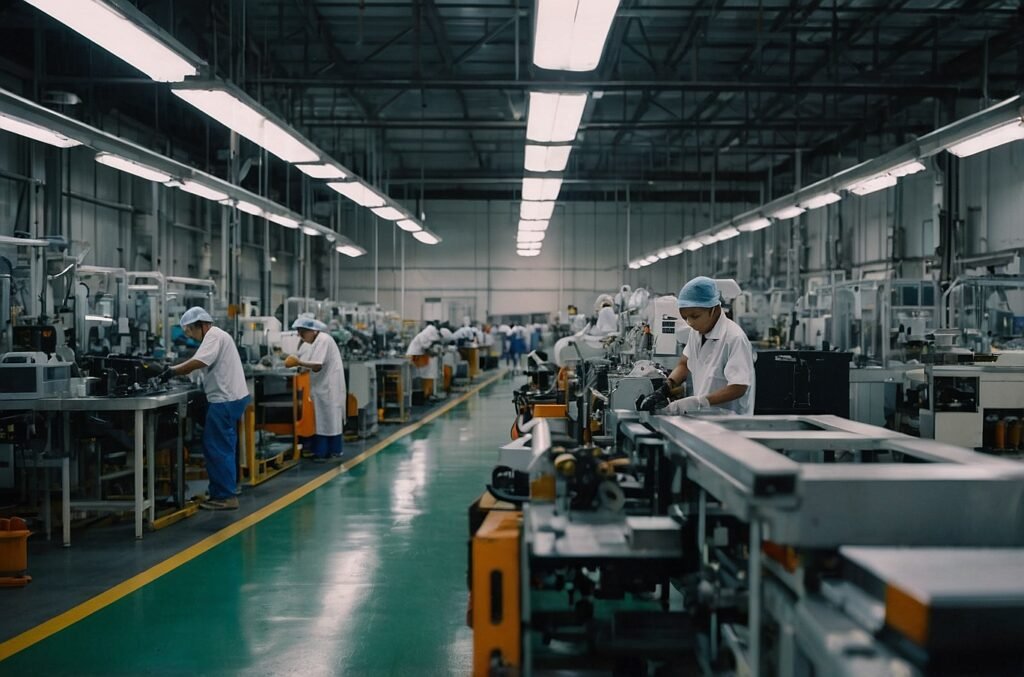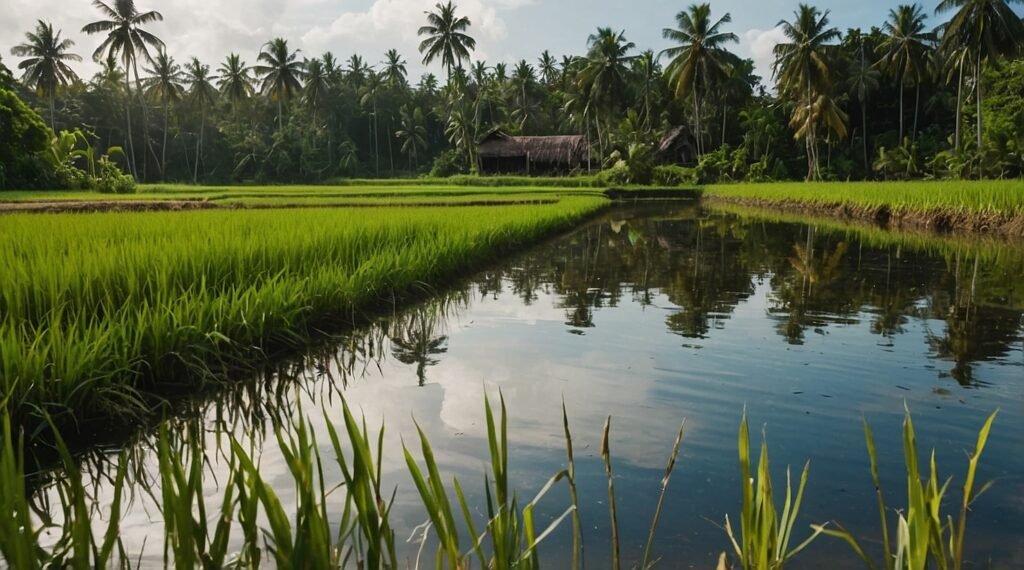The Philippines has emerged as a significant player in the global manufacturing landscape, leveraging its strategic location, skilled workforce, and supportive government policies. This comprehensive analysis delves into the key manufacturing sectors and products that drive the Philippine economy. We will explore the historical context, current trends, and future prospects of manufacturing in the country, highlighting the industries that contribute significantly to its economic growth and export performance. From electronics and semiconductors to automotive parts and textiles, the Philippines has diversified its manufacturing base, attracting both domestic and foreign investments. This blog post aims to provide a detailed overview of the manufacturing landscape in the Philippines, offering insights into its strengths, challenges, and potential for further development.
Historical Context of Manufacturing in the Philippines
The history of manufacturing in the Philippines dates back to the Spanish colonial era, but it was not until the post-World War II period that the sector began to play a significant role in the country’s economy. In the 1950s and 1960s, the government adopted import substitution policies to promote domestic industrialization. However, this approach had limited success due to various factors, including a small domestic market and inefficient production processes. The 1970s saw a shift towards export-oriented industrialization, which laid the foundation for the country’s current manufacturing landscape. This period marked the establishment of export processing zones and the implementation of policies to attract foreign direct investment (FDI) in manufacturing. The 1980s and 1990s witnessed further liberalization of the economy, leading to increased foreign participation in various manufacturing sectors. Today, the Philippines has transformed into a key manufacturing hub in Southeast Asia, with a diverse range of industries contributing to its economic growth and export performance.
Overview of the Philippine Manufacturing Sector
The manufacturing sector plays a crucial role in the Philippine economy, contributing significantly to the country’s Gross Domestic Product (GDP) and employment. According to data from the Philippine Statistics Authority, manufacturing accounted for approximately 19% of GDP in 2023, making it one of the largest sectors in the economy. The sector employs millions of Filipinos, providing job opportunities across various skill levels and regions. Manufacturing in the Philippines is characterized by a mix of large-scale, export-oriented industries and small to medium-sized enterprises (SMEs) catering to domestic and regional markets. The country’s manufacturing base is diverse, encompassing industries such as electronics, food processing, chemicals, textiles, and automotive parts. The sector has shown resilience in the face of global economic challenges, adapting to changing market conditions and technological advancements.
Key Statistics on Philippine Manufacturing
| Indicator | Value |
|---|---|
| Share of GDP (2023) | 19% |
| Employment (2023) | 3.5 million |
| Export Value (2023) | $68 billion |
| FDI in Manufacturing (2023) | $2.5 billion |
| Number of Registered Manufacturing Establishments | 126,000+ |
Key Manufacturing Sectors in the Philippines
Electronics and Semiconductors
The electronics and semiconductor industry stands as the crown jewel of Philippine manufacturing, consistently ranking as the country’s top export earner. This sector has been a major contributor to the economy since the 1970s when multinational corporations began establishing assembly and testing facilities in the country. The Philippines has become a crucial link in the global electronics supply chain, specializing in the production of integrated circuits, semiconductors, and various electronic components. The country’s expertise in this field has attracted major global players, including Intel, Texas Instruments, and Samsung, who have set up operations in Philippine economic zones. The sector’s success can be attributed to the country’s skilled workforce, cost-competitive environment, and strong government support through initiatives such as the Philippine Electronics Industry Development Strategy (PEIDS).
Key Products in Electronics and Semiconductors:
- Integrated circuits
- Semiconductor devices
- Printed circuit boards
- Computer peripherals
- Consumer electronics
Automotive Manufacturing
While not as prominent as its electronics counterpart, the automotive manufacturing sector in the Philippines has shown significant growth and potential in recent years. The country has positioned itself as a regional hub for automotive parts and components production, supplying both domestic and international markets. The sector benefits from the presence of major global automakers such as Toyota, Mitsubishi, and Honda, who have established assembly plants in the country. The Philippine government has been actively promoting the development of the automotive industry through initiatives like the Comprehensive Automotive Resurgence Strategy (CARS) Program, which aims to revitalize domestic vehicle production and strengthen the local parts manufacturing ecosystem. The sector not only contributes to exports but also supports a wide network of local suppliers and service providers.
Key Products in Automotive Manufacturing:
- Vehicle assembly
- Transmissions and engines
- Wiring harnesses
- Suspension systems
- Body parts and components
Food and Beverage Processing
The food and beverage processing industry is one of the oldest and most stable sectors in Philippine manufacturing. Leveraging the country’s rich agricultural resources and culinary traditions, this sector has grown to become a significant contributor to both domestic consumption and exports. The Philippines is known for its processed tropical fruits, coconut products, and seafood, which are in high demand in international markets. The sector also caters to the growing domestic market, producing a wide range of processed foods, beverages, and confectioneries. Major players in this industry include both multinational corporations and local companies that have expanded their reach globally. The government supports the sector through various programs aimed at improving food safety standards, promoting value addition, and enhancing competitiveness in the global market.
Key Products in Food and Beverage Processing:
- Processed fruits and vegetables
- Coconut products (oil, water, milk)
- Seafood products
- Snack foods and confectioneries
- Beverages (including alcoholic drinks)
Textiles and Garments
The textile and garment industry has been a significant part of Philippine manufacturing for decades, providing employment to a large workforce, particularly in rural areas. While the sector has faced challenges from increased global competition, it continues to be an important contributor to the country’s export earnings. The Philippines has carved out a niche in high-quality, value-added garments and specializes in certain product categories such as formal wear and technical textiles. The industry benefits from the country’s skilled labor force, design capabilities, and adherence to international labor and environmental standards. Government initiatives, such as the Philippine Textile and Garment Industry Road Map, aim to enhance the sector’s competitiveness by promoting innovation, upgrading technology, and improving market access.
Key Products in Textiles and Garments:
- Formal wear and suits
- Sportswear and active wear
- Intimate apparel
- Technical textiles
- Embroidered and hand-woven textiles
Chemical Products Manufacturing
The chemical products manufacturing sector in the Philippines encompasses a wide range of products, from basic chemicals to specialty and consumer chemical goods. This industry plays a crucial role in supporting various other manufacturing sectors by providing essential inputs and materials. The sector has seen steady growth, driven by increasing domestic demand and export opportunities. Key subsectors include petrochemicals, agrochemicals, and pharmaceutical products. The Philippines has attracted investments from global chemical companies, leveraging its strategic location and growing market. The government has been promoting the development of the chemical industry through initiatives aimed at enhancing research and development capabilities, improving infrastructure, and ensuring environmental sustainability.
Key Products in Chemical Products Manufacturing:
- Petrochemicals
- Agrochemicals and fertilizers
- Pharmaceutical products
- Industrial chemicals
- Paints and coatings
Factors Contributing to the Growth of Manufacturing in the Philippines
Several factors have contributed to the growth and development of the manufacturing sector in the Philippines:
- Strategic Geographic Location: The Philippines’ position in Southeast Asia provides easy access to major markets in the Asia-Pacific region, making it an attractive location for export-oriented manufacturing.
- Skilled and Cost-Competitive Workforce: The country boasts a large, English-speaking workforce with a strong technical education background, particularly in engineering and technology fields.
- Government Support and Incentives: The Philippine government has implemented various policies and programs to attract investments in manufacturing, including tax incentives, simplified business registration processes, and the establishment of special economic zones.
- Infrastructure Development: Ongoing improvements in transportation, logistics, and telecommunications infrastructure have enhanced the country’s manufacturing capabilities and connectivity.
- Free Trade Agreements: The Philippines is a party to several free trade agreements, providing manufacturers with preferential access to key export markets.
Challenges Facing the Philippine Manufacturing Sector
Despite its strengths, the manufacturing sector in the Philippines faces several challenges:
- Infrastructure Constraints: While improvements have been made, the country still faces issues with power supply reliability and transportation infrastructure, which can impact manufacturing efficiency.
- Global Competition: Increasing competition from other low-cost manufacturing destinations in the region poses a challenge to the Philippines’ market share in certain industries.
- Technological Adoption: Some segments of the manufacturing sector, particularly SMEs, lag in adopting advanced technologies and automation, potentially affecting their long-term competitiveness.
- Skills Gap: As manufacturing processes become more technologically advanced, there is a growing need for workers with specialized skills in areas such as robotics and data analytics.
- Environmental Concerns: Balancing industrial growth with environmental sustainability remains a challenge, particularly in sectors with significant environmental impacts.
Future Prospects and Emerging Trends
The future of manufacturing in the Philippines looks promising, with several emerging trends shaping the sector:
- Industry 4.0 Adoption: There is a growing focus on adopting Industry 4.0 technologies, including the Internet of Things (IoT), artificial intelligence, and advanced robotics, to enhance manufacturing processes and competitiveness.
- Green Manufacturing: Increasing emphasis on sustainable and environmentally friendly manufacturing practices, driven by both regulatory requirements and consumer demand.
- Reshoring and Nearshoring: The global trend towards supply chain diversification and resilience presents opportunities for the Philippines to attract manufacturing investments from companies looking to reduce dependence on a single country.
- Expansion of High-Value Manufacturing: There is potential for growth in high-value manufacturing sectors such as aerospace components, medical devices, and advanced electronics.
- Domestic Market Growth: The expanding middle class in the Philippines is creating new opportunities for manufacturers catering to domestic consumption.
Conclusion
The manufacturing sector in the Philippines has come a long way from its humble beginnings, evolving into a diverse and dynamic contributor to the country’s economy. From electronics and semiconductors to automotive parts and processed foods, Philippine manufacturing encompasses a wide range of industries that cater to both domestic and global markets. The sector’s growth has been fueled by factors such as a skilled workforce, strategic location, and supportive government policies. However, challenges remain, including infrastructure constraints and the need for technological upgrades. Looking ahead, the Philippine manufacturing sector is poised for further growth and transformation, driven by emerging trends such as Industry 4.0 adoption and the shift towards sustainable manufacturing practices. As the country continues to position itself as a key manufacturing hub in Southeast Asia, the sector’s resilience and adaptability will be crucial in navigating the evolving global economic landscape and seizing new opportunities for growth and innovation.
Disclaimer: This blog post is based on publicly available information and data at the time of writing. While every effort has been made to ensure accuracy, economic conditions and industry statistics may have changed since the time of writing. Readers are encouraged to verify current information from official sources. Please report any inaccuracies to us promptly so we can correct them.




